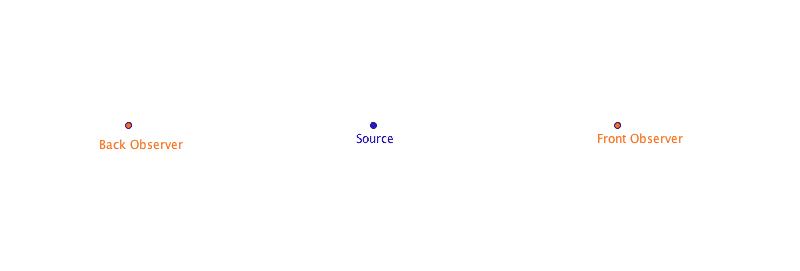Doppler Effect
What is the Doppler Effect?
The Doppler effect occurs when a sound wave source moves relative to an observer. It describes the change in the frequency and wavelength as percieved by an observer, due to the relative motion.
This is because as the source approaches, the waves in front are compressed, leading to a higher frequency and therefore a higher-pitched sound. When it moves away, waves are stretched out, resulting in a lower frequency and therefore a lower-pitched sound.
Look at the animation below that illustrates this concept:

An example of this concept in real life, is when a siren moves past you. Look at this video to see the Doppler Effect in action:
What happens when the sound source moves at or faster than the speed of sound?
As the speed of the source reaches the speed of sound, the wavelengths infront of the source approach zero. Due to the waves bunching up on each other in front of the source, an area of inteference builds up. When this area of inteference reaches an observers ear, it is percieved as a loud sonic boom.

When the source is travelling faster than the speed of sound, a large cone of interference trails behind the source. When the cone crosses the path of an observer, a loud sonic boom is heard.
A common misconception is that a sonic boom is only heard when the source breaks the speed of sound. However in reality, you hear a sonic boom when the shock wave passes over you, not when the plane reaches the speed of sound.
Look at the diagram below that shows this cone of interference:

Sonic booms can be heard in supersonic aircraft. Click below to hear a real sonic boom:
Doppler effect interactive demo
Speed of Sound: 343 m/s
Observed Frequency: 440.00 Hz